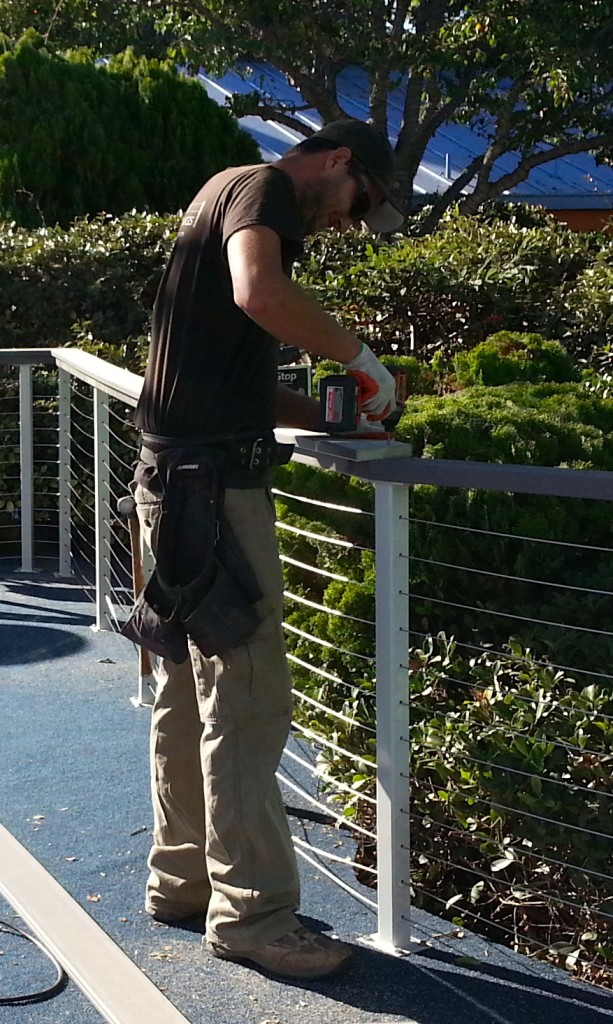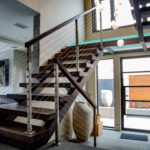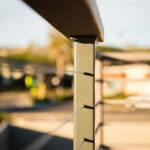Code Compliant Clear Spacing
Building codes nationwide hold to a 4″ maximum clear spacing requirement when it comes to constructing new or retrofitting older barrier railings. More simply stated; this means that no gap anywhere on the railing should exceed 4″. Older homes, condos, and apartment buildings with outdated railings may need to be upgraded due to this requirement. Being grandfathered in at an older code spacing requirement may not prevent liability due to possible falls or injury caused by outdated spacing requirements. Newer codes and standards for child safety railings require tighter spacing than standards from decades ago.
What's the reason for newer and tighter spacing requirements?
The 4″ max spacing requirement used for current codes was actually designed to prevent small children from being able to force their head or body into and through the gap anywhere on the railing framework. It’s been this way for some time now and it really boils down to child safety requirements. In this article we will share some information necessary to upgrade your railing systems and make them safer for children, pets, and people.
Code Railing Height by State
Railing height considerations can vary by state and it is recommended that anyone considering new railing construction or retrofit check with local building codes prior to installation. In California, a minimum railing height of 42″ is required. Some states still hold to a 36″ railing height requirement.
How do I figure out my railing height?
Railing height should be measured from the top of the deck surface to the top of the railing cap member. A good rule of thumb is to measure from multiple locations to ensure uniformity across the surface. Decks and patios can vary, especially when dealing with slopes so it’s best to check height in multiple locations.
Railing Gaps, Vertical and Horizontal Member Spacing
Checking for gaps along the railing framework is a good way to make sure your railings meet current codes. Child safety railings should not contain any gaps larger than 4″ and there are common locations where this may occur:
–Vertical Members – check spacing between pickets, balusters, and or vertical pipes, cables for compliance
–Horizontal members– bottom rails spaced from deck surface, horizontal pipe or cable spacing. Cable spacing should not exceed 3″ in order to prevent more than 4″ when spread. Solid horizontal members like pipe and/or wooden railing members that do not move can be spaced at 4″ clear
–Panels– glass panels or solid wood, steel or other panels should not contain gaps larger than 4″ in between panels
Hiring a Professional for Safer Railings
Many people choose to hire a deck builder or railing professional to guarantee safety and code compliance. Hiring a licensed contractor that is familiar with local and current code requirements is a good option for higher risk applications like raised decks, balconies, etc. DIY products and solutions are very popular and effective but there are also applications that are better suited for hiring a professional installer.
High rise multi unit complexes, HOA’s, and municipalities are often required to use professional contractors for construction projects. Additionally, insurance claims often require the use of a professional. From a railing application standpoint; stairs, angled applications, large scale projects, commercial, and industrial projects are best handled by licensed professionals.
Our team at S.D.C.R. has been fabricating and installing child safe, code compliant railings for nearly 2 decades now. If you are interested in learning more please give us a call or visit the quote request page to receive an estimate.





